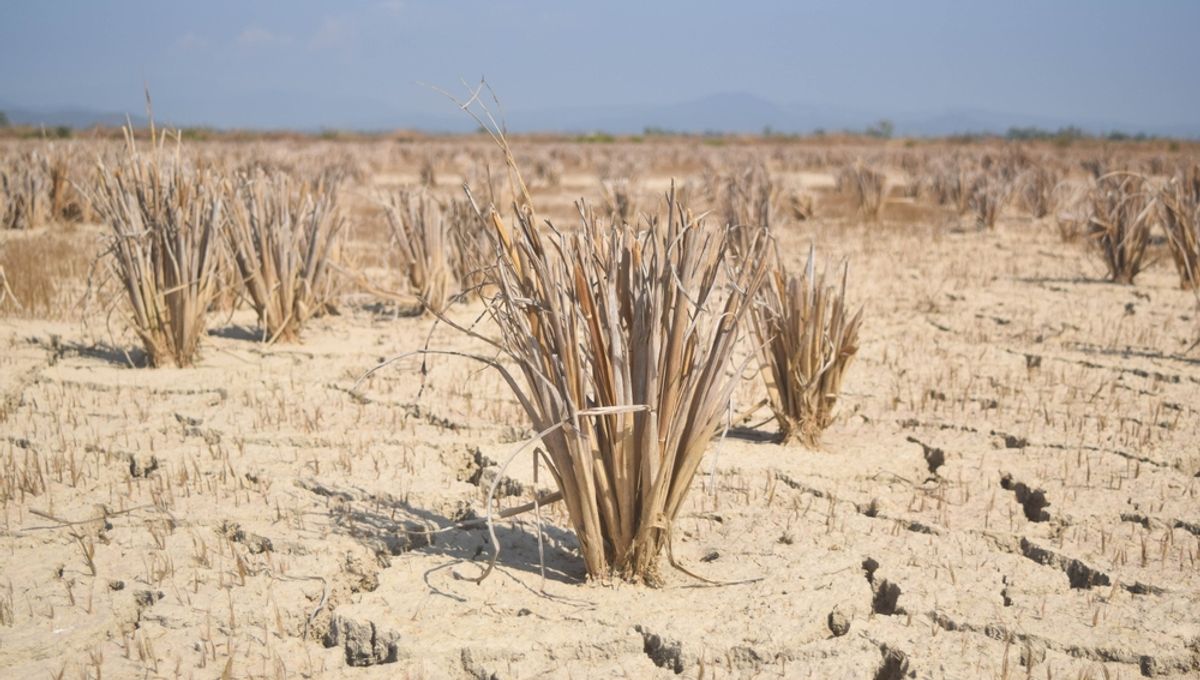
From 1990 to 2020 the world got hotter and most of it also got drier. “Most” here not including the oceans. Areas meeting the definition of drylands have expanded by an area equal to almost three times that of India. The trend has been described in a United Nations report as revealing; “A global, existential peril previously shrouded by a fog of scientific uncertainty.”
Climate shifts change rainfall patterns, increasing precipitation in some places and decreasing it in others. That creates inevitable problems of adjustment – if you’ve planted trees or grapevines suited to one climate there’s not a great deal of comfort that the same conditions now exist somewhere else.
That, however, is far from the end of the problem. Instead of half the world getting more rain and half getting less, 77.6 percent of the land area of the Earth was drier in 2020 than thirty years earlier, according to a report from the UN Convention to Combat Desertification (UNCCD). No doubt a few places that suffered from excess rainfall in the past have benefited, but far more of the planet is vulnerable to drought than water from above (rising sea levels are a different matter).
The report The Global Threat of Drying Lands: Regional and global aridity trends and future projections launched at the UNCCD’s 16th conference is packed with bleak statistics on the scale of the problem. With the addition of 4.3 million km2 (1.7 million miles2) to the category, just over 40 percent of the Earth’s land, aside from Antarctica is now classified as dryland. That doesn’t necessarily mean inhospitable desert, but includes areas where the potential evapotranspiration is at least 45 percent greater than annual precipitation.
More than 30 percent of humanity – 2.3 billion people – now live in drylands, the report stresses: the figure was 1.2 billion in 1990. By the end of the Century, as many as 5 billion people may live in drylands, or at least be trying to. Already millions are seeking to flee increasingly desertified areas, but less affected nations are making them welcome.
In addition to the territory newly classified as dryland, another 3.3 million km2 (1.2 million miles2) has been recategorized into more severe subcategories, with semi-arid becoming arid, and arid areas joining the 9 percent outside Antarctica now called hyperarid. Climate models make clear the trend will continue at least to the end of the century, barring restrictions on Greenhouse emissions far more substantial than nations currently seem poised to make.
“This analysis finally dispels an uncertainty that has long surrounded global drying trends,” Ibrahim Thiaw, UNCCD Executive Secretary, said in a statement. “For the first time, the aridity crisis has been documented with scientific clarity, revealing an existential threat affecting billions around the globe.”
Thiaw noted that aridity is different from drought, representing a; “Permanent, unrelenting transformation,” rather than something that eventually ends, adding: “Vast lands across the globe will not return to how they were and this change is redefining life on Earth.”
There has been considerable criticism of recent global climate conferences being held in fossil fuel-exporting states. However, holding the UNCCD Conference of Parties in Riyad may have been quite appropriate. Although the placement gives the oil industry more power to sabotage decisions, delegates from almost 200 countries can look out the window on their way there and back and contemplate their own nation’s climatic future.
Heat-trapping gasses are not the only cause. Forests bring rain both by transpiring vast amounts of water and releasing aerosols that water vapor can collect around. Felling them dries out surrounding areas, a major threat to the Amazon today. Draining of groundwater for irrigation is both a consequence and a cause of increased aridity.
As usual, the consequences are hitting the poorest hardest. Although the Report says China has had the largest area recategorized as drylands of any nation, the countries most affected by percentage of land are South Sudan and Tanzania. Almost half of Africa’s population now lives in drylands and the report attributes a loss of 12 percent of Africa’s GDP to increased aridity over the 1990-2015 period. Beyond the human victims, 55 percent of terrestrial vertebrates are at risk of habitat loss from aridity.
By 2040 global losses of the three largest staple crops are projected to be 60 million tons a year.
Although the report lays out the scale of the problem in unprecedented detail, it also offers some answers, including technologies that can harvest and apply water more efficiently, appropriately sited land restoration and ways to build resilience. Some of this advice can be implemented locally by any willing to read it, but most requires international cooperation of the sort these conferences are designed to achieve, but seldom do.
The findings may seem in contradiction to the giant floods whose images have filled our screens in recent months from the Sahara to Spain to the Indian subcontinent. Unfortunately, they are not. Drylands have always been particularly prone to flooding. When rains do come to deserts it is often in intense bursts, and climate change is making this worse. Moreover, lands denuded of vegetation are much less able to absorb heavy rains, leaving more to flood low-lying areas.
“Without concerted efforts, billions face a future marked by hunger, displacement, and economic decline. Yet, by embracing innovative solutions and fostering global solidarity, humanity can rise to meet this challenge. The question is not whether we have the tools to respond—it is whether we have the will to act,” said Nichole Barger, Chair of the UNCCD Science-Policy Interface.
The report itself, and a summary are available on the UNCCD website.
Source Link: Three Quarters Of Earth’s Landmass Is Drying Out, Creating “Existential Peril”